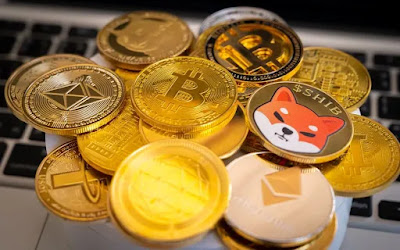
What Is Bitcoin? How To Mine, Buy, and Use It
Introduction:
Bitcoin, introduced in 2009 by the mysterious Satoshi Nakamoto, revolutionized the world of finance as the first decentralized cryptocurrency. This digital currency operates outside the control of traditional financial institutions, offering users a peer-to-peer payment system without the need for intermediaries. In this comprehensive guide, we’ll delve into the origins of Bitcoin, how it works, how to acquire it, and its evolving role in the global economy.
Understanding Bitcoin:
Bitcoin (BTC) is a digital currency created through a decentralized ledger system known as blockchain. Unlike fiat currency, which is issued and regulated by governments, Bitcoin is generated, distributed, traded, and stored independently of any central authority.
Key Points:
– Bitcoin was introduced to the public in 2009 by an anonymous entity known as Satoshi Nakamoto.
– Its blockchain technology ensures secure and transparent transactions without the need for intermediaries.
– Bitcoin operates on a finite supply model, with rewards halved every 210,000 blocks, leading to scarcity over time.
– The smallest unit of Bitcoin is called a satoshi, divisible to eight decimal places.
Bitcoin’s Blockchain Technology:
Bitcoin’s blockchain is a distributed ledger maintained by a network of computers, ensuring the integrity and security of transactions. Each block on the blockchain contains encrypted transaction data linked to previous blocks, forming an immutable chain of records.
Key Elements:
– Blockchain transactions are secured using cryptographic techniques.
– Blocks contain transaction data, block headers, and cryptographic hashes linking them to previous blocks.
– Miners use specialized hardware to validate transactions and add new blocks to the blockchain.
How to Mine Bitcoin:
Bitcoin mining involves using computational power to solve complex mathematical puzzles and validate transactions on the blockchain. Miners are rewarded with newly minted bitcoins for their efforts.
Mining Options:
– Mining can be done individually or through mining pools.
– Specialized hardware, such as ASIC miners, is used for efficient mining operations.
– Joining a mining pool increases the likelihood of earning rewards but requires sharing profits with other participants.
How to Buy and Use Bitcoin:
Bitcoin can be purchased on cryptocurrency exchanges and used for various purposes, including peer-to-peer payments and investment.
Buying Bitcoin:
– Cryptocurrency exchanges facilitate the buying and selling of Bitcoin for fiat currency.
– Investors can purchase fractions of Bitcoin to participate in the market.
Using Bitcoin:
– Bitcoin can be used as a means of payment for goods and services at merchants that accept cryptocurrencies.
– Cryptocurrency wallets store private keys necessary for conducting Bitcoin transactions securely.
Risks and Regulations:
Investing in Bitcoin carries inherent risks, including market volatility, regulatory uncertainty, and security vulnerabilities. Regulatory bodies worldwide are grappling with the challenge of regulating cryptocurrencies while balancing innovation and consumer protection.
Key Considerations:
– Bitcoin’s price volatility makes it a speculative investment.
– Regulatory frameworks for cryptocurrencies vary by jurisdiction.
– Security measures, such as insurance and secure storage solutions, mitigate risks associated with owning and trading Bitcoin.
Conclusion:
Bitcoin’s journey from a concept outlined in a white paper to a globally recognized digital asset has been marked by innovation, controversy, and rapid growth. As the cryptocurrency landscape continues to evolve, understanding Bitcoin’s fundamentals, risks, and potential benefits is essential for investors and enthusiasts alike.
Disclaimer:
The information provided in this guide is for educational purposes only and does not constitute financial advice. Individuals should conduct their own research and consult with financial professionals before investing in cryptocurrencies.








